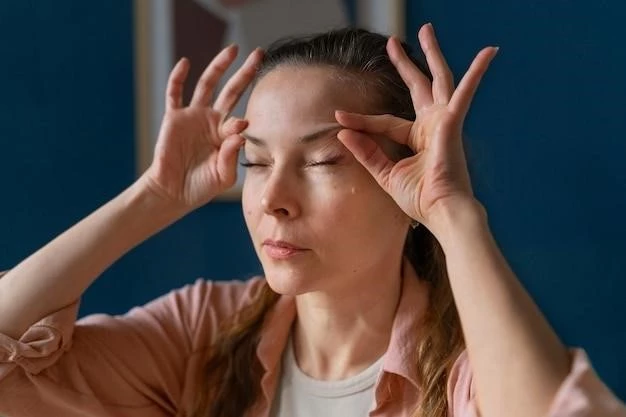Overview of Blepharonasofacial Syndrome Van Maldergem Type
Learn about Blepharonasofacial Syndrome Van Maldergem Type‚ including causes‚ symptoms‚ diagnosis‚ treatment‚ prognosis‚ research‚ and support available.
Introduction to Blepharonasofacial Syndrome Van Maldergem Type
Welcome to an overview of Blepharonasofacial Syndrome Van Maldergem Type. This rare genetic disorder affects facial features and development. Understanding its causes‚ symptoms‚ treatment options‚ and support resources is crucial for individuals and families impacted by this condition. By delving into research advances and prognosis insights‚ you can gain a comprehensive understanding of Blepharonasofacial Syndrome Van Maldergem Type to navigate the journey effectively;
Causes of Blepharonasofacial Syndrome Van Maldergem Type
Understand the genetic mutations responsible for Blepharonasofacial Syndrome Van Maldergem Type to grasp its underlying causes.
Genetic Mutations
Genetic mutations play a crucial role in the development of Blepharonasofacial Syndrome Van Maldergem Type. These alterations can affect facial features and overall growth‚ leading to the unique characteristics associated with this condition. Understanding the specific genetic mutations involved can assist healthcare professionals in accurate diagnosis and personalized treatment plans for individuals affected by this rare syndrome. Genetic testing is essential in identifying these mutations and guiding appropriate medical management. Stay informed about the latest research findings in genetic mutations related to Blepharonasofacial Syndrome Van Maldergem Type to enhance your understanding and support for affected individuals and families.

Symptoms and Signs of Blepharonasofacial Syndrome Van Maldergem Type
Recognizing the distinct physical characteristics and features associated with Blepharonasofacial Syndrome Van Maldergem Type is essential for early identification and intervention.
Physical Characteristics
Individuals with Blepharonasofacial Syndrome Van Maldergem Type may exhibit unique physical features such as narrow eye openings‚ droopy eyelids‚ a short nose with a broad tip‚ a wide mouth‚ and an open mouth at rest. These distinctive characteristics can aid in the clinical diagnosis of the syndrome. It is important to be aware of these physical traits and consult healthcare professionals for proper evaluation and management. Understanding these physical characteristics can guide healthcare providers in delivering tailored care and support to individuals and families affected by Blepharonasofacial Syndrome Van Maldergem Type.
Diagnosis and Genetic Testing for Blepharonasofacial Syndrome Van Maldergem Type
Early diagnosis through clinical evaluation and genetic testing is vital for timely intervention and personalized care for this syndrome.
Diagnostic Process
The diagnostic process for Blepharonasofacial Syndrome Van Maldergem Type involves a comprehensive assessment of physical features‚ medical history‚ and genetic testing. Healthcare professionals may conduct clinical examinations to identify characteristic signs of the syndrome. Furthermore‚ genetic testing‚ including molecular analysis‚ chromosomal microarray‚ or other specialized tests‚ is crucial in confirming the presence of specific genetic mutations associated with the syndrome. Collaborating closely with a multidisciplinary team of medical experts can ensure accurate diagnosis and appropriate management strategies tailored to the individual’s needs. Regular follow-ups and monitoring are essential for tracking progression and adjusting treatment plans accordingly. Seeking timely diagnosis and ongoing medical supervision are key elements in optimizing care for individuals with Blepharonasofacial Syndrome Van Maldergem Type.
Treatment Options for Blepharonasofacial Syndrome Van Maldergem Type
Explore management approaches tailored to address the unique needs and challenges of individuals with this rare genetic syndrome.
Management Approaches
Management of Blepharonasofacial Syndrome Van Maldergem Type involves a multidisciplinary approach focusing on addressing the specific needs of the individual. Treatment may include surgical interventions to correct physical anomalies‚ therapies to support development and improve quality of life‚ and ongoing medical monitoring to manage associated health issues effectively. Additionally‚ early intervention programs‚ educational support‚ and mental health services play a vital role in enhancing the overall well-being of individuals living with this condition. It is essential for healthcare providers to collaborate closely with families and support networks to establish a comprehensive care plan that considers the holistic needs of the affected individuals. By leveraging a holistic management approach‚ individuals with Blepharonasofacial Syndrome Van Maldergem Type can receive tailored care and support to optimize their outcomes and quality of life.
Prognosis and Outlook for Individuals with Blepharonasofacial Syndrome Van Maldergem Type
Understand the long-term outlook and seek ongoing support to enhance the quality of life for individuals with this syndrome.
Long-Term Outlook
The long-term outlook for individuals with Blepharonasofacial Syndrome Van Maldergem Type varies depending on the severity of the condition and the effectiveness of management strategies. Regular medical follow-ups‚ early intervention‚ and comprehensive care can significantly improve the quality of life and overall outcomes for affected individuals. It is crucial for individuals‚ families‚ and healthcare providers to collaborate closely to address the evolving needs of those living with this syndrome. Seeking ongoing support‚ staying informed about research developments‚ and accessing available resources can contribute to a more positive long-term outlook. With proactive management and a supportive network‚ individuals with Blepharonasofacial Syndrome Van Maldergem Type can lead fulfilling lives and achieve their full potential despite the challenges posed by the syndrome.
Research Advances in Understanding Blepharonasofacial Syndrome Van Maldergem Type
Stay informed about the latest research to deepen the understanding of this rare syndrome and improve care practices.
Current Research
Ongoing research into Blepharonasofacial Syndrome Van Maldergem Type focuses on identifying novel genetic mutations‚ exploring innovative treatment modalities‚ and enhancing diagnostic approaches. Researchers are striving to uncover deeper insights into the underlying mechanisms of the syndrome to pave the way for more targeted and effective interventions. Collaborative efforts within the scientific community aim to improve the quality of life for individuals affected by this condition. Staying informed about the latest findings and advancements in research can empower individuals‚ families‚ and healthcare providers to make informed decisions and optimize care strategies. By supporting and participating in current research initiatives‚ we can contribute to enhancing the understanding and management of Blepharonasofacial Syndrome Van Maldergem Type.
Support and Resources for Individuals and Families Affected by Blepharonasofacial Syndrome Van Maldergem Type
Access support networks and resources to connect with others‚ gain information‚ and navigate the challenges of living with this syndrome.
Support Networks
Support networks provide invaluable connections for individuals and families affected by Blepharonasofacial Syndrome Van Maldergem Type. Joining these networks offers a sense of community‚ access to shared experiences‚ emotional support‚ and valuable resources. Engaging with support groups‚ online forums‚ and advocacy organizations can provide encouragement‚ guidance‚ and empowerment in navigating the challenges associated with the syndrome. Connecting with others who understand your journey can foster a sense of belonging and offer a platform to exchange knowledge and coping strategies. Utilize these support networks to access information‚ share concerns‚ and find encouragement on the path towards improved well-being and quality of life.
